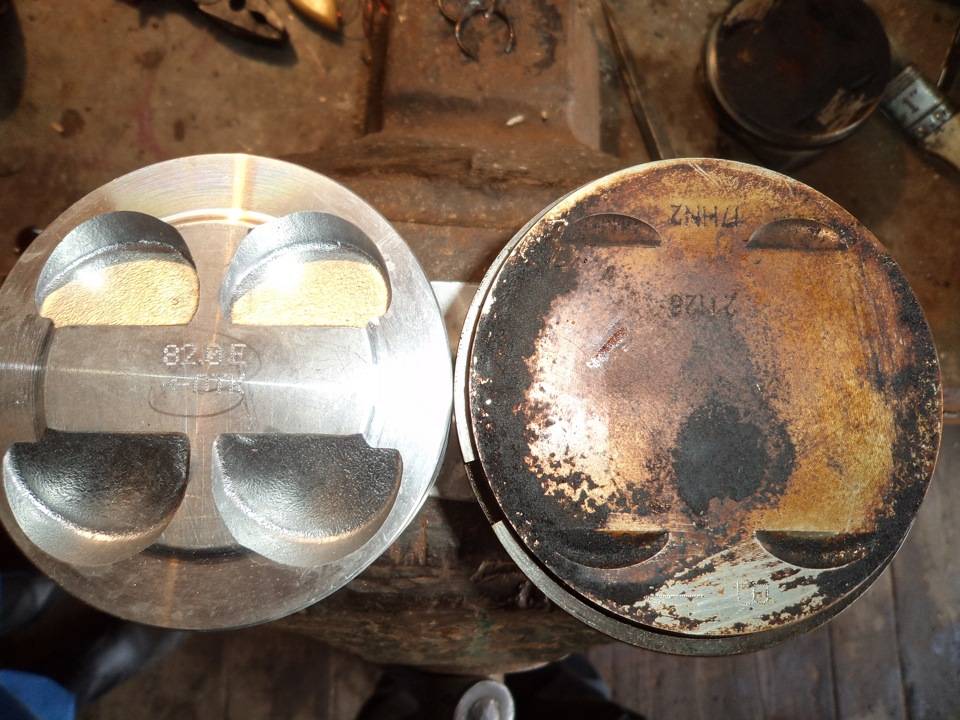Reasons for replacing the piston group on the prior. What is it, the best piston on the Priora: compare, choose, install
Today, many owners of VAZ Priora cars are faced with such a problem as a broken timing belt, as a result of which the valves “meet” the pistons. As a result, this problem can cost the owner of the vehicle a pretty penny. To prevent this, some motorists install STK, STI or Avtramat plugless pistons on their cars. About which pistons are better to put on your car and how to do it yourself with a photo, read on.
General information and piston device
The purpose of the piston is to transfer the energy produced by the combustible mixture to the crankshaft. When the products of combustion expand, enormous loads are placed on the surface of the part. The maximum pressure in this case can be 80 bar, and this is comparable to a force of several tons.
The temperature in the cylinders during the combustion of the mixture can reach 2,600 degrees, which is several times higher than the temperature at which the piston melts. As a result, at this moment there is a decrease in the strength of the alloy, thermal stress occurs on the surface of the element due to the temperature difference. In order for a piston to function in such harsh operating conditions, it must not only be light, but also sufficiently resistant to wear. In addition, a high-quality forged piston group should also have a high thermal conductivity, which will allow the elements to cool quickly when operating at high temperatures.
As for the surface itself, it must be formed in such a way that the piston does not wedge in the cylinder under any circumstances. Otherwise, hot gases may enter the crankcase. Since the components are barrel-shaped, as you can see in the photo, even a large difference in temperature between the bottom and the skirt will not affect its functionality. It should also be noted that these parts are produced using an "anti-ellipse", which makes it possible to compensate for the deformation of the skirt.
The top element of the pistons is the head, which consists of a bottom and a groove with which the seal rings are installed. The head should be more reliable, since most of the loads fall on it. Therefore, the piston heads are treated with an additional protective coating. The grooves for the sealing rings themselves are made at a slight angle, as a result of which the outer edges of the rings will be slightly higher than the inner ones. As a result, the slope of the cross section of the groove will not appear, and this is quite possible.
To make the piston slide better, its surface is also opened additional materials. For more break-in, the manufacturer usually uses phosphating or tin, which also reduces the likelihood of scratches when starting a cold engine. But such a coating usually wears out during break-in. Another coating - anti-friction - remains for the entire service life, it helps to prevent the appearance of rust and erosion on working surfaces.
The piston skirt must be processed with special cutters to ensure the creation of a micro-relief. Thus, the motor lubricant will adhere better to the surface of the element, and friction will be much less. So what is the best piston to put on your car?
You will choose the manufacturer yourself, but on our own behalf we want to add that the products of the companies meet all of the above requirements:
- Avtramat.
Comparative characteristics
So that you can understand which group of pistons is better, consider comparative characteristics all three manufacturers with photos:
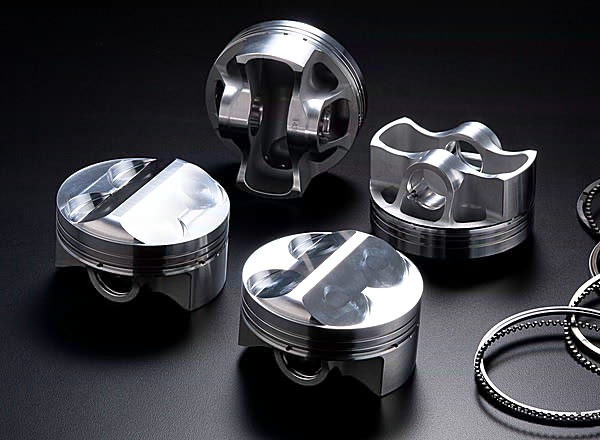
Here are the details for Priora
Some priors, alas, have a sad experience: a broken timing belt leads to large-scale destruction in the car engine. The reason is banal - the meeting of valves with pistons. The fact is that the pistons installed by the manufacturer during assembly have very small selections for valves - zincing. And this leads to the fact that when the pistons meet, they disable the valves.
Repairing such breakdowns is a long-term and expensive thing. Therefore, the owners sometimes, without waiting for the overhaul of the engine, install plugless pistons from STI and STK companies from Russia, or Avtramat pistons from Ukrainian manufacturers, on their Frets.
General information and piston device
The piston transfers the energy produced by the burning fuel to the crankshaft. During the explosive expansion of hot combustion products, the piston surface experiences mechanical and thermal loads of very high intensity. The maximum pressure in the Priora engine can reach 65-80 bar, which is equivalent to a force of several tons.
During operation, the piston periodically accelerates to over 100 km/h and decelerates to zero at up to 200 Hz at 6000 rpm. During the combustion of the fuel-air mixture, the temperature in the cylinder reaches 1800-2600°C, which is several times higher than the melting point of the material from which the piston is made. In this case, the strength of the alloy decreases, thermal stresses arise along the body of the piston due to temperature changes, to which stresses from gas pressure and inertia are added during acceleration-deceleration at a high frequency.
In order to "survive" in such difficult conditions, the piston must be light and resistant to wear, and the high thermal conductivity of the alloy is designed to ensure rapid cooling of the piston when heated.
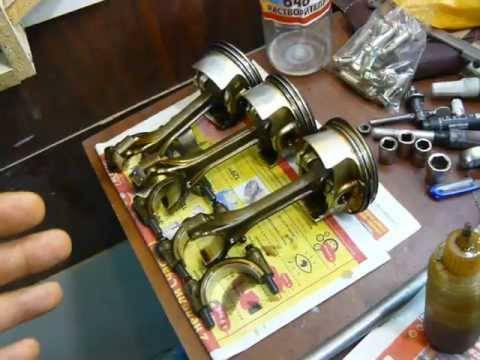
Spare parts produced by Avtramat
The outer surfaces of the piston must be formed in such a way that under no circumstances does it jam in the cylinder, so that hot gases do not penetrate into the crankcase. With a difference in heating of the piston bottom and its skirt, the piston has a barrel-shaped shape in the cold state, which makes it possible to meet these requirements.
To compensate for deformations of the skirt during operation of the piston, it is made with an "anti-ellipse". Its major axis is perpendicular to the axis of the finger foramen.
The top of the piston is the head. It includes a bottom and grooves for installing O-rings. In order for the head to be able to withstand the loads that fall on it, a protective coating is applied to it.
Ring grooves are made at a slight angle, ensuring that the outer edges of the rings are higher than the inner ones. This prevents the formation of a downward slope in the cross section of the groove when operating under high temperature loads.
For better sliding, the piston surface is treated with various coatings. For better running-in, coatings are applied, which eventually wear out during running-in (tin, phosphating). They also reduce the occurrence of scratches when starting a cold engine. Anti-friction coatings (nickel plating, anodizing) remain for the entire period of operation, prevent cracking and erosion of surfaces.
Old and new parts
- Clean the engine before disassembly. Unscrew the bolts of the right engine support bracket with a 13 wrench, remove the bracket. Unscrew the bolts securing the alternator bracket and the front support - key 15. Remove the bracket.
- Disconnect the pipeline, cylinder head, flywheel, oil filter. Dismantle the pump supply pipe to the cylinder block. It is more convenient to carry out further work on a workbench or stand.
- Remove the oil pan, oil pump with oil receiver. Unscrew the bolts of the crankshaft rear oil seal holder, key 10. Remove the holder by prying with a screwdriver for the tides on the housing.
- Unscrew the screws of the connecting rod caps one by one and remove the connecting rods with pistons.
- Remove piston rings. The piston pin circlip can be removed from the groove by prying it with an awl or screwdriver. If the circlip shows signs of wear, it should be replaced.
- Using a 16-18 mm mandrel, push out the piston pin, remove the piston from the connecting rod.
If the pistons are replaced on the Priore, which has already run pretty well, measurements should be taken with a caliper at a distance of 3, 10, 60 and 112 mm from the upper edge of the cylinder in the longitudinal and transverse directions of the engine. By the difference in readings between the measure by 3 mm and the rest, determine the degree of wear of the cylinders. If the wear is small and uniform - up to 0.05 mm, this can be compensated by installing a piston of a different class, with a larger diameter than the former. But with wear from 0.15 mm, cylinder boring will be required. It is better to combine it with replacing pistons with plug-in ones, so that later you do not have to replace it again.
Piston and connecting rod are assembled in reverse order. The arrow on the bottom of the piston should point in the same direction as the marks on the connecting rod and its cap.
After replacing the pistons and installing the engine in place, it will take some time to Idling drive the engine to break in new pistons. And, thanks to the installation of plugless pistons on Priora from STK, STI or Avtramat, even if the timing belt burst due to an oversight of the owner, a hot meeting of valves with pistons will not take place.
Firstly - Federal Mogul - a German office, not a pendosia. Now about the timing belt. The fact that he is torn is nonsense. The belt really nurses its resource of 200 thousand. km. But bends in valves and connecting rods are not uncommon. The reason is the misalignment of the belt and the axis of the support roller bearing. Because of this, the radial single-row bearing runs misaligned. Since it stands in the leading branch of the belt, the loads on it are high. The bearing separator is destroyed, the belt slips and the shafts are out of sync. The reason for the misalignment of the axis of the belt and the bearing is either the misalignment of the axes of the shafts, pump, rollers, the taper of the pulleys or rollers, or the wear of the distance washer 21126-1005317-00 or the crankshaft pulley 21126-1005030-00, or the belt itself is crooked. Because of these jambs, the belt is constantly trying to move. It is kept from displacement by a washer and a crankshaft pulley. If the jambs described above are minor, then the washer and pulley will effectively center the belt. Otherwise, they do, but not for long. That is, by evaluating the wear rate of these parts, one can judge the build quality and the resource of the timing drive as a whole. If the drive has worked 100 thousand. km, there is no noticeable wear - the unit is quite reliable. If there is noticeable wear after 45 thousand, you need to look for and eliminate the cause of the belt slip, and not wait for the destruction of the roller bearing. The alignment of the belt on the motor 2112 and 21124 is done a little differently - due to the flanges on the support roller and the tension roller. This increases the wear on the side surfaces of the belt, which does not add life to the belt and therefore to the drive. In addition, the size of the pulleys increases during the heating of the motor, and the tension mechanism is rigid (without a damper). As a result, in order not to bend the shafts of the mechanisms, the belt itself is a damper - it is more "rubber" than the prior one. That is, on a cold engine, when the pulleys are "small", the belt is compressed to eliminate slippage. When the pulleys are hot, the belt stretches. It also stretches with a sharp change in engine speed, especially in a cold state. Constant cycles of tension-compression lead to accelerated aging of rubber. Which again does not add a resource. As for the pistons. Maybe they do not bend the valves, maybe they provide the same volume of the combustion chamber. But the efficiency of the motor (hence power and consumption) will be worse than on FM pistons. Because: 1 The area of the piston on the side of the combustion chamber is larger, that is, there is more heat outflow to the piston and less for the work of expanding the gas. A hotter piston gives off more heat through the rings, which also reduces their life. 2 Flatter piston surface on the combustion chamber side provides better cylinder ventilation. Here pistons with grooves and a displacer are again in flight. 3 An uneven piston surface causes strong turbulence during the compression stroke, which in turn violates the clear boundaries of the flame front during the power stroke. That is, the mixture takes longer to ignite, so the mixture does not undergo combustion during combustion. full work as with a flat piston, and the hotter one is thrown out of the cylinder. 4 Overheating of the piston can easily cause the mixture to self-ignite, which also does not add power. Conclusion: you can ride them, but in a pensioner's style. If you try to remove the maximum from them, as from relatives, then you will be disappointed - there will be no more agility, and fuel consumption, on the contrary, will jump. And finally. So that the engine does not knock, you do not need to experiment with oil and gasoline, in 90% of cases this is the reason, and only 10% in hardware.
Owners of Lada Priora cars often find themselves in unpleasant situations. A break in the timing belt leads to sad consequences. The thing is that the pistons that the manufacturer installs at the factory when assembling the engine have insufficient depth samples. These selections are called counterbores by minders. This is what causes the destruction. Repair of the motor after such an incident will cost the car owner dearly. It is cheaper to replace the standard ones with the so-called plugless pistons on the Priora.
Physics of pistons, loads
This element is designed to convert energy from a fuel explosion into translational movements and transfer them to the crankshaft. When the gases expand after the explosion, mechanical and thermal effects are exerted on the piston and its working surface. The part is under high-intensity loads. The maximum possible pressure in the Priora engine can reach up to 65-80 bar. It's almost a few tons. During operation, the pistons can periodically accelerate their movements up to 100 km / h or more. Also, their movement can slow down to almost zero at a frequency of up to 200 Hz at 6000 rpm. When a mixture of fuel and air explodes in a cylinder, the temperature inside can reach 1800-2600 degrees. Under such temperature influences, the strength characteristics are reduced. Thermal stresses occur due to sudden temperature changes. It is also worth adding stresses from the pressure of combustion products and inertia during accelerations and decelerations at high frequencies.
About the design of regular pistons
In order to work in such conditions, the part must be as light as possible. And the material is wear resistant. Also, the alloy must have a high thermal conductivity. This will ensure high speed cooling. External working surfaces must be made in such a way that the part does not jam in a heated cylinder. Also, combustion products should not penetrate into the crankcase. The piston has a barrel shape, there is a big difference between the degree of heating of its working part and the skirt. This allows you to meet all requirements. 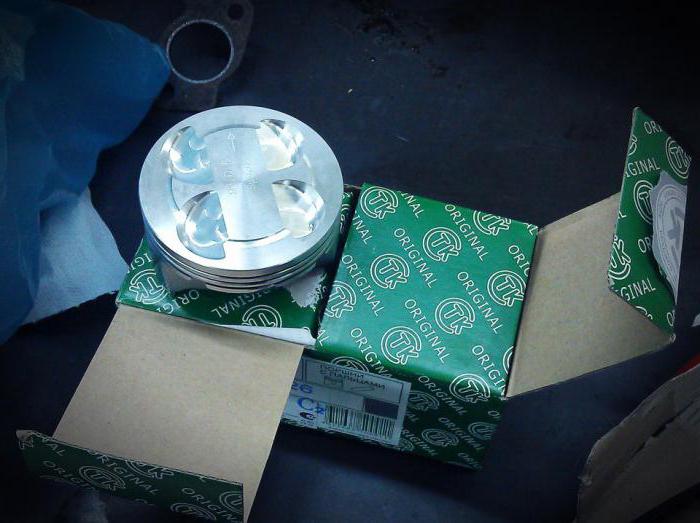 To compensate for possible deformations of the skirt during operation, the piston is manufactured with an “anti-ellipse”. The major axis of the part is strictly perpendicular to the axis of the pin hole.
To compensate for possible deformations of the skirt during operation, the piston is manufactured with an “anti-ellipse”. The major axis of the part is strictly perpendicular to the axis of the pin hole.
The head of the piston or its upper part includes the bottom. There are also special grooves for mounting O-rings. In order for the upper part to cope with high loads, it is covered with a special layer of protective coating during the production stage. Grooves for installing rings are made so that there is a small angle. This ensures that the outer edge of the ring is higher than the inner one. This prevents the cross section of the groove from tilting downward during operation at high temperature loads. To ensure better sliding, the piston is treated with special coatings over the entire working surface. In order for the part to run in better, coatings are applied that will wear out during the running-in process. This is a tin coating or phosphating. Materials that improve sliding remain on the surface during the entire period of operation. 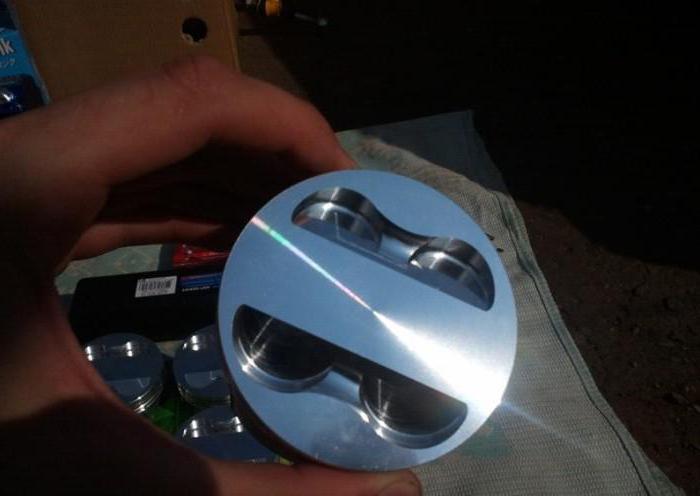 The skirt is processed with the help of incisors. This is done to obtain a microrelief. Due to this, the oil is better retained on the surface of the part, thereby reducing friction.
The skirt is processed with the help of incisors. This is done to obtain a microrelief. Due to this, the oil is better retained on the surface of the part, thereby reducing friction.
Differences in the design of "safe" pistons for "Priora"
So, the plugless pistons on the Priora practically do not differ from the regular ones. This is actually exact copy standard piston for engines from AvtoVAZ. 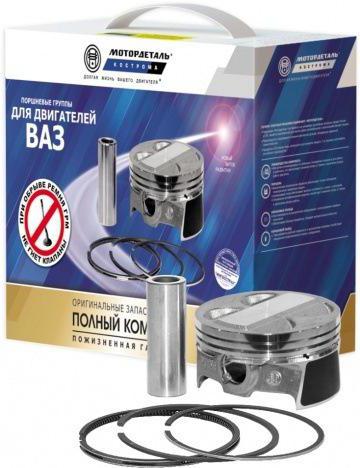 But there is no traditional mirror on the upper part - instead there are deep samples. This allows, when meeting with valves, to secure both the timing parts and the pistons themselves. Dimensions and all other parameters fully correspond to the characteristics of standard parts.
But there is no traditional mirror on the upper part - instead there are deep samples. This allows, when meeting with valves, to secure both the timing parts and the pistons themselves. Dimensions and all other parameters fully correspond to the characteristics of standard parts.
Why install non-factory pistons?
This is different for every car. If you fully comply with the manufacturer's regulations for engine maintenance, install recommended or at least high-quality spare parts and consumables, then the car will serve for a long time and properly, and all mechanisms and components will work in their normal modes.
But everyone wants to save money or make a car tuning, and here a number of questions arise. If you save at the expense of timing (and this is a belt and rollers for it), buying obviously low-quality parts, then it should be borne in mind that their replacement intervals will also fall, as will the price. For example, if, as a standard, on AvtoVAZ engines, the belt should be changed after 30-50 thousand km, then on cheap and non-original components, rarely anyone managed to drive more than 5-10 thousand km. 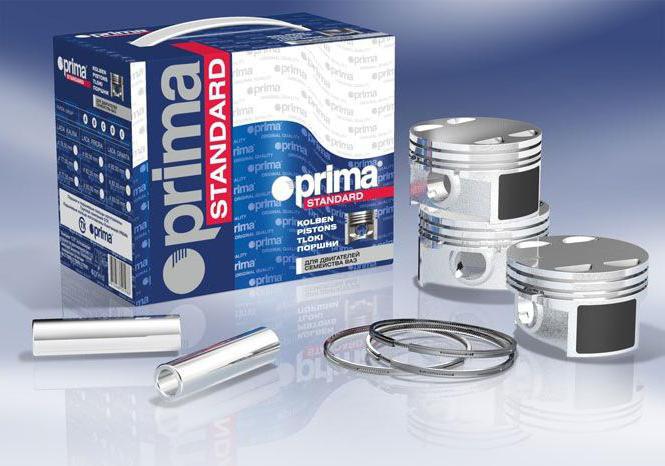 Some tuners try to take everything and even more from the engine that it can give. Often motors are equipped with compressors. However, most of the parts and assemblies in the engine are not at all designed for such loads. The engine cannot work for a long time in the range of 7-9 thousand revolutions. The timing mechanism is not designed for such operation either - the weakest link is always damaged. And that's the belt. And what to do when you want to save money and at the same time drive slowly? You can get out of this situation by installing plugless pistons on the Priora.
Some tuners try to take everything and even more from the engine that it can give. Often motors are equipped with compressors. However, most of the parts and assemblies in the engine are not at all designed for such loads. The engine cannot work for a long time in the range of 7-9 thousand revolutions. The timing mechanism is not designed for such operation either - the weakest link is always damaged. And that's the belt. And what to do when you want to save money and at the same time drive slowly? You can get out of this situation by installing plugless pistons on the Priora.
Benefits of Installing Safe Mechanisms
Even inexperienced motorists know that a plugless piston system will be more secure and durable. Even if the belt breaks, the overhead camshaft will simply stop. The piston moves from below due to the action of the crankshaft. If plugless pistons are installed on the Priora, a disaster will not happen. The valves will go into the grooves and will not bend. Even if the belt breaks, the car can be transported to the service station. This is a big advantage.
Flaws
In the process of creating various AvtoVAZ engines for front-wheel drive models, designers and engineers initially created similar pistons. "Priora" had plugless grooves already from the factory (in early versions). More often they can be found on VAZ engines of the tenth family. This was due to the use of a belt instead of a chain. If the piston is lightened as much as possible, then the motor acquires an additional 5-7 percent of power, which is a lot. Replacing the pistons on the "Prior" with plug-in power will not add. This will only protect expensive repairs. To make a groove, it is necessary that the surface is thick enough. The piston is made heavy, which takes power. The groove also has an unsatisfactory effect on the compression of the combustible mixture. This also affects power. As a result, if you install such parts on a car, then the motor loses 5-7% of its power. For a 150 hp engine With. it's 10.5 liters. s, which is very important. ![]() Here is what those who have already installed plugless pistons on their Priora car write. Reviews show that, in addition to reducing power, fuel consumption has increased. Detonation increases due to uneven weight distribution.
Here is what those who have already installed plugless pistons on their Priora car write. Reviews show that, in addition to reducing power, fuel consumption has increased. Detonation increases due to uneven weight distribution.
Manufacturers of pistons for "Priora"
So, the car owner decided to protect himself and is thinking about installing protected pistons. Let's look at what plug-in pistons are on sale for Priora, which ones are better to purchase and install.
STI, Tolyatti
These products are made in Togliatti using hot pressing technology. Judging by the reviews of those who have already equipped the engine with them, the details in a significant way reduce the efficiency and power of the engine. This can be explained by the low compression ratio and large cylinder size. The valve recesses are too deep. 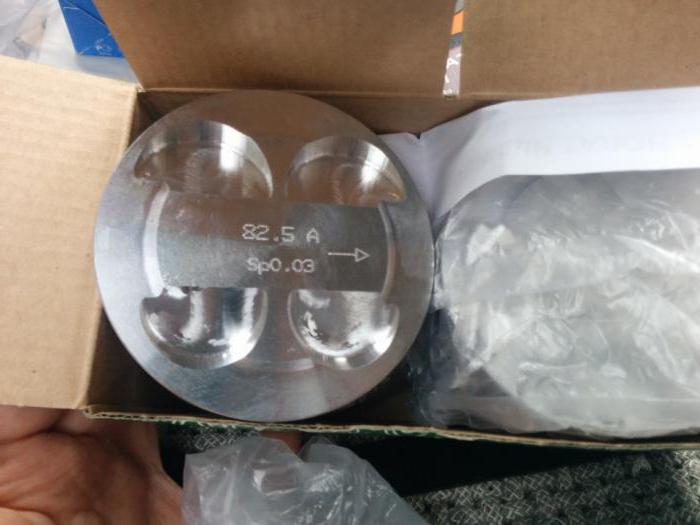 The low content of silicon in the alloy does not in the best way influences the strength properties. Lower nickel content reduces resource. At the same time, STIs have a high cost.
The low content of silicon in the alloy does not in the best way influences the strength properties. Lower nickel content reduces resource. At the same time, STIs have a high cost.
STK
Pistons "Priora" plugless STK are produced in Samara. The characteristics of these products are practically no different from regular pistons. The samples are deep enough. Owners may not worry about the consequences of a broken timing belt. Of the shortcomings, a higher mass can be distinguished. This affects the acceleration dynamics. But adequate cost is a decisive factor when choosing.
Conclusion
Thus, it can be seen that safe pistons have a lot of advantages. These advantages are undeniable. Each owner of cars of this model must install plugless pistons on the Priora. Which one to choose depends on the goals and objectives. If you need reliable and inexpensive, then this is STK or Ukrainian "Avtramat". However, the plant in Kharkov stopped production, and all stocks are practically sold. And STI is not worth the money, reviews say.
The problem of a broken timing belt and valve damage is familiar to many owners. new Priora with a lightweight connecting rod and piston mechanism.
The problem can be avoided with the timely diagnosis of the condition of the belt and its replacement if necessary. But even responsible owners of domestic transport note that problematic situations, even with a thorough study of internal systems, do not completely disappear.
Therefore, the plug-in pistons on Priora will be the right solution, the installation of which can be done in the cabin or by the motorist himself.
High-quality plug-in pistons on Priora: product features and owner advice
![]()
The main advantage of spare parts is the presence of deep grooves for valves, which, in the event of a timing belt break, do not allow engine elements to fail. Thus, a possible breakdown and the need for repair are completely prevented.
Priora's high-quality plug-in pistons help not only avoid problems with the car, but also waste large sum for subsequent recovery. The valve problem will be solved forever.
Among the most popular products, motorists note the Kostroma pistons on the Priora without plugs with an affordable cost. It will be possible to secure a car with them both quickly and inexpensively. Therefore, most owners of the Lada with an 8-valve engine liked the purchase for its practicality. The installed elements do not affect changes in the operation of the unit.
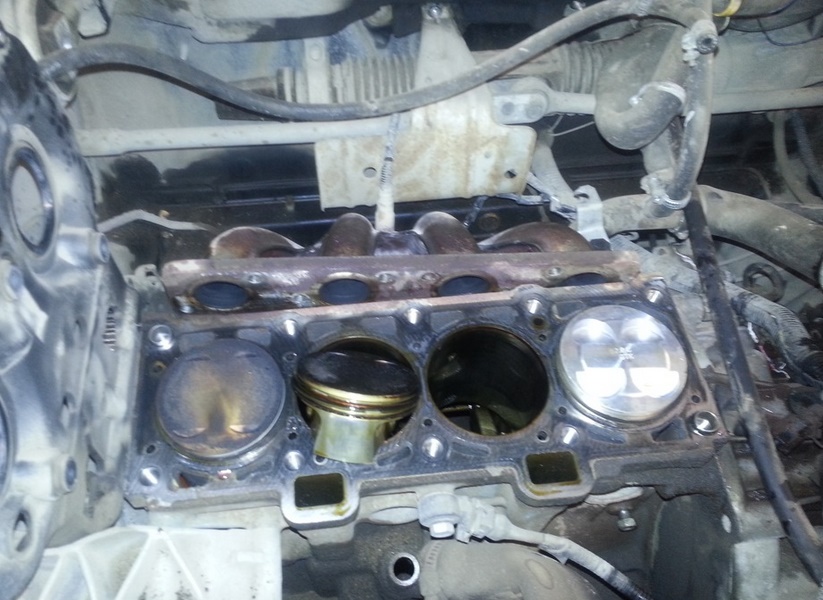
Less popular are plugless pistons on the Priora STK, which have a higher cost. True, the current owners have no complaints about wear resistance and any other qualities of products. Recommended by this manufacturer and many auto repair shops. Therefore, when choosing, it is important to take into account the opinion of both specialists and experienced drivers.
An additional nuance when choosing suitable products should be dimensional differences and the kit itself. You can buy plugless pistons for Priora with a nominal diameter of 82 mm or repair models with a larger size.
There are also certain classes that differ in the gap parameter. It is worth considering the presence of additions: for the installation, you can use the old connecting rods and stoppers, only if they are not damaged.
How do you replace Priora pistons with plug-in ones with your own hands?
The correct and high-quality replacement of pistons on the Priore with plug-in ones should begin with the complete removal of oil, the analysis of the timing. The replacement procedure is quite complicated and requires careful study of each stage.
Incorrect installation may cause engine malfunction or even damage to the unit. If the owner is not confident in his abilities, then you should contact the repair shop. If the driver is experienced and not the first time engaged in repairs, then you need to proceed with the following tasks:
1. The cylinder head is removed, the connecting rods are disconnected.
2. The connecting rod and piston mechanism is removed.
3. Old pistons are removed and new pistons are installed.
4. Piston rings and connecting rod bearings are being replaced.
5. A new gasket is installed on the cylinder head.
6. The block is assembled, new oil is poured in and the run-in is performed.
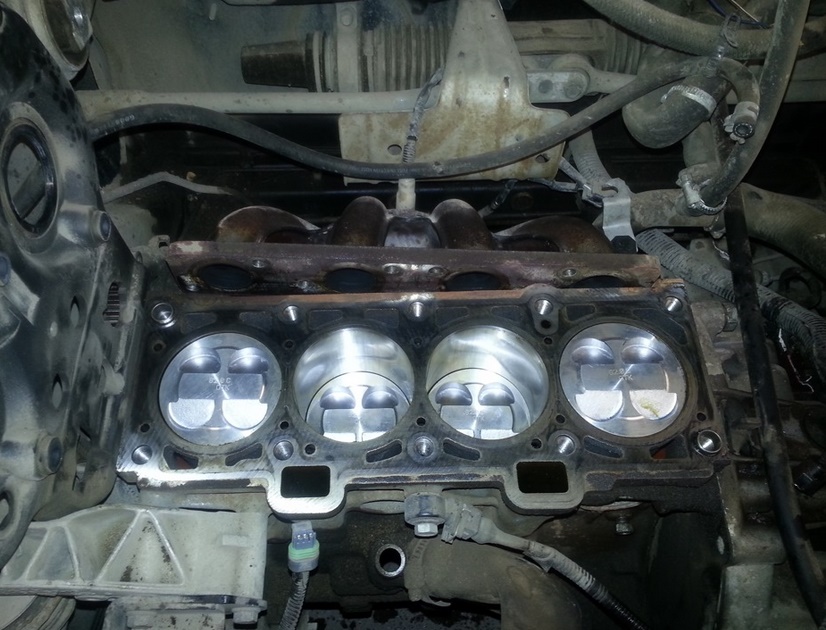
Do not forget about the lubrication of rubbing parts to avoid problems when idling the engine. New pistons on Priora without plugs, if properly installed, will last without any problems yet long years. But the owner should not forget to check the condition of the timing belt.
Despite the increased safety of the connecting rod and piston mechanism, leaving others important details car should not be left unattended.

